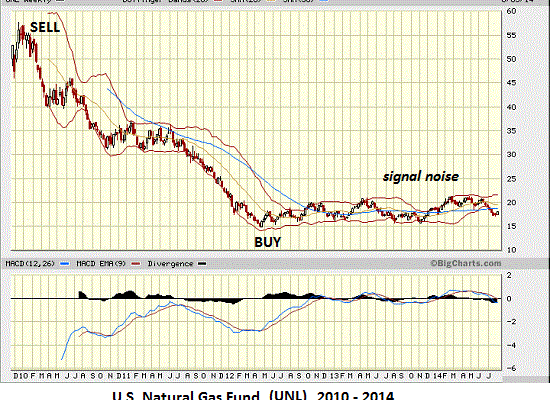Investing in oneself and enterprises one actively controls may be the only legitimate deployment of capital that qualifies as an investment in the traditional sense.
Since I’ve been discussing the stock market in general terms (Bull and Bear, etc.), it seems like a good time to briefly note the difference between trading and investing.
In general, investing is putting capital at risk for the long term, based on a trend or story that the investor believes will have a material impact on whatever financial vehicle he has chosen to invest in.
In general, trading is shorter-term and technical-based. A trader might buy and sell the investor’s chosen financial vehicle many times, based on technical trends and indicators.
For an example, let’s take a look at a natural gas-based commodity fund, UNL. United States 12 Month Natural Gas Fund (UNL):
“The United States 12 Month Natural Gas Fund® LP (UNL) is an exchange-traded security that is designed to track the price movements of natural gas. UNL issues shares that may be purchased and sold on the NYSE Arca. UNL invests primarily in listed natural gas futures contracts and other natural gas related futures contracts, and may invest in forwards and swap contracts. These investments will be collateralized by cash, cash equivalents, and US government obligations with remaining maturities of two years or less.”
Here is a long-term chart of UNL with an investor’s buys and sells marked:

Here is a one-year chart of UNL with a trader’s buys and sells marked:

The long-term investor may use technical tools to choose entry points–for example, MACD and moving-average crosses–but the investment is fundamentally based on a story about the underlying dynamics and trend changes.
For example, the investor in UNL may be betting on this story: either natural gas production in the U.S. will decline as fracked production falls off, or global demand for natural gas will rise even faster than production, pushing prices higher. Whatever the underlying dynamics, demand will outstrip supply and prices will move dramatically higher over time.

